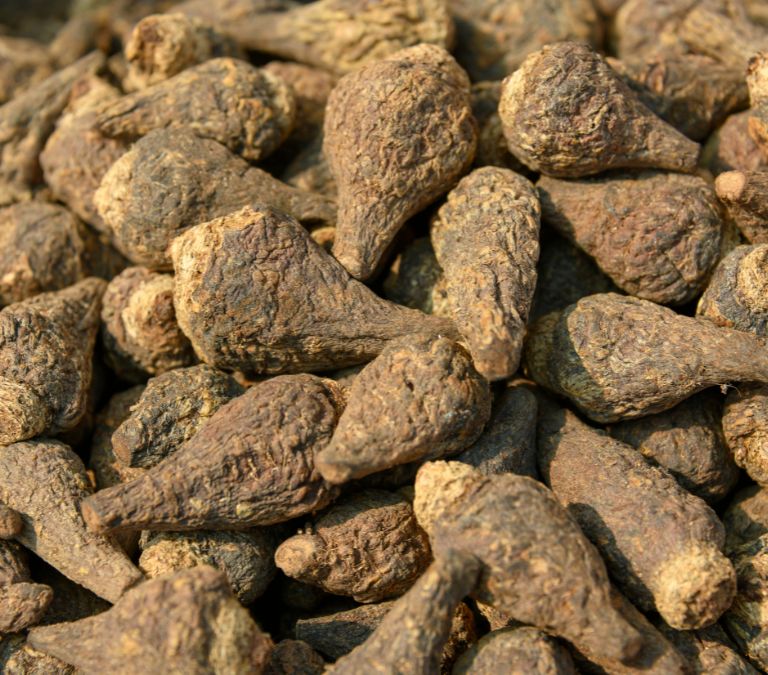Herbs are a wide group of plants humans have used for various purposes for hundreds of years, making them an indispensable resource.
While some thrive in the chilly, foggy highlands, most spices are cultivated in warm climates. Many of the seed herbs originate from more temperate regions.
Because they are flavorful and aromatic, they are excellent for use in cooking, and due to their unique nutritional content, they are good for medical purposes. Many essential minerals, including vitamins A, C, and K, and polyphenols, can be found in herbs.
Polyphenols have anti-inflammatory and antioxidant qualities, which protect against the development of malignancies, cardiovascular ailments, diabetes, osteoporosis, and neurological diseases, all of which are conditions to which many menopausal women are sensitive.
It is, therefore, not surprising that herbs can ease many of the symptoms of menopause. No wonder many menopausal women have decided to subscribe to herbs to find relief from menopause symptoms.
Thankfully, the world is filled with many herbs that can help alleviate menopause symptoms, and thus make this phase in the lives of women a relatively easy one to survive. However, this article will elucidate the role of 10 common herbs that have proven invaluable.
Dandelions
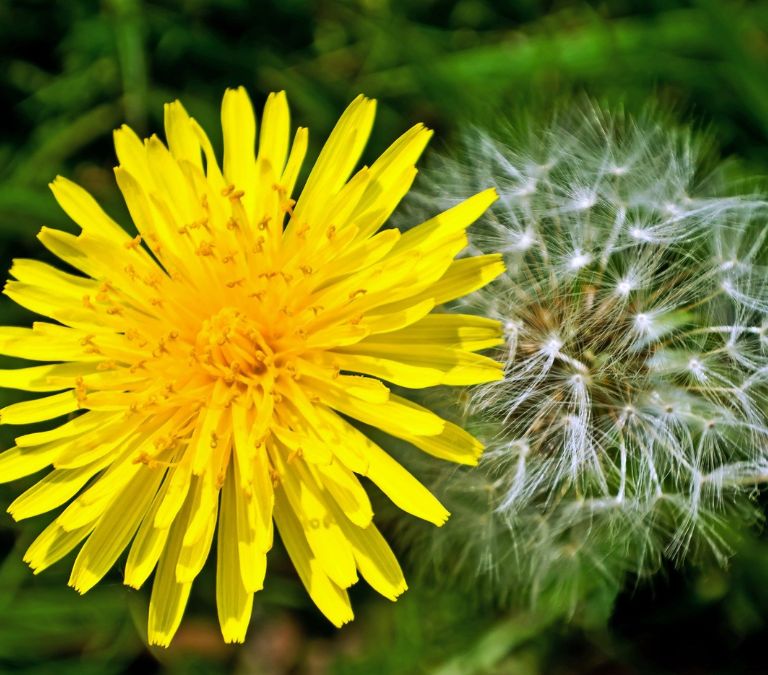
Dandelions are a flowering plant species belonging to the family Asteraceae called Taraxacum. The genus is indigenous to North America and Eurasia.
Two species of dandelions are the most widely grown, T. officinale (common dandelion) and T. erythrospermum (red-seeded dandelion). Both species are edible and were brought to North America from Europe, where they now spread like wildfire.
Although T. Officinale occurs the most, there are numerous additional species of dandelion. Besides adding color to the food, the flowers, roots, and leaves are frequently used as natural cures to assist blood sugar control and improve skin, liver, and heart health in herbal teas and supplements.
Dandelions are incredibly nutrient-dense plants from root to flower and are rich in fiber, vitamins, and minerals. Dandelion greens are an excellent source of several vitamins, including A, C, and K, and can be consumed fresh or cooked. They also include modest levels of other B vitamins, vitamin E, and folate.
The dandelion root is full of inulin and plant-based soluble fiber that can be consumed whole, like other root vegetables, or dried and turned into tea.
Effect of Dandelion on the Skin
As a beneficial skin care procedure, the dandelion extract has been shown in animal studies and test tubes to protect against ultraviolet damage, aging, and menopausal acne-related skin damage.
In one study, using dandelion flower extracts and leaves shortly before or right after being exposed to UVB radiation—the radiation you get from sunlight—prevents skin damage.
Extract from the root of the dandelion root has been shown to stimulate the production of new skin cells in an earlier test-tube study, which may help your skin’s appearance as you age.
Older studies suggest that dandelion extract may increase hydration and collagen synthesis while decreasing skin irritation and inflammation, which could be beneficial for treating and preventing some types of acne.
Effect of Dandelion on Bone Health
It is important to note that as women approach menopause, they will see a drop in estrogen as bone cells break down faster than new ones can form.
Long used as a tonic and diuretic, dandelion is rich in Vitamins A, E, C, K, and B2 (riboflavin) and contains potassium, iron, calcium, magnesium, manganese, zinc, and phosphorus—minerals that are great for building strong, healthy bones.
Chasteberry
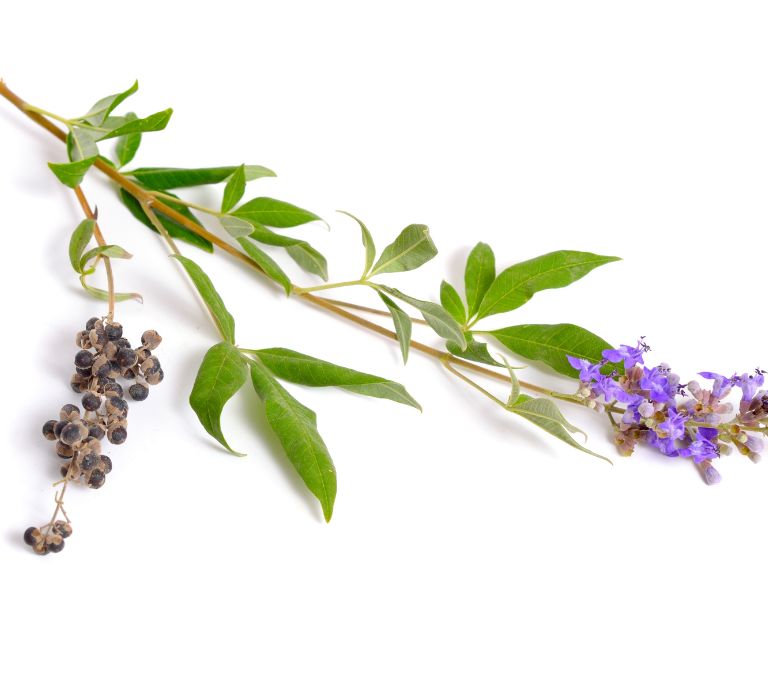
There are 250 species of Vitex, the largest genus in the Verbenaceae plant family, in the globe. The most popular variety of Vitex used medicinally is Vitex agnus-castus.
The chasteberry or monk’s pepper fruit, also known as Vitex agnus-castus, is roughly the size of a peppercorn. It comes from the chaste tree, which came from the possibility that men’s libidos were reduced by its fruit during the Middle Ages. The chasteberry is a plant native to the Mediterranean region and Asia.
This fruit and other plant parts are commonly used as herbal remedies to treat menopause symptoms, infertility concerns, and other conditions that impact a woman’s reproductive system.
It frequently benefits menopausal women since it might increase progesterone levels, which could lessen hot flashes and night sweats.
Effect of Chasteberry on Estrogen Level
As a pituitary adaptogen, the chasteberry tree aids in increasing low ovarian hormone output, maintaining healthy levels of estrogen and progesterone, or reducing excessive hormone secretion, all of which aid in restoring the balance of hormone levels.
The unique chemical composition of the chaste berry tree accounts for this mild and balanced action. It can bind to estrogen receptors and subsequently perform a biological activity that is either relaxing or estrogen-enhancing in nature. Chasteberry has an affinity for estrogen, but they also restore progesterone deficiency.
As a dopamine agonist, it lowers prolactin release to alleviate menopausal symptoms. This balanced activity of the chaste berry tree is caused by its chemical composition. It can bind to estrogen receptors and have biological effects that can increase or decrease estrogen levels.
The Chasteberry tree makes up for low progesterone. By reducing prolactin secretion, it functions as a dopamine agonist to reduce menopause-related symptoms by greatly reducing hot flashes, sleeplessness, and mood swings.
Chasteberry is one of many plants that, when taken regularly, have a beneficial effect in lowering skin acne. This advantage is believed to result from its inherent capacity to communicate with the pituitary gland and naturally reduce the prolactin level.
Effect of Chasteberry on Menopause-induced Psychological Symptoms
Due to the correlation between psychological symptoms and a decline in dopaminergic tone, it has been discovered that chasteberry can reduce menopausal emotional suffering.
The primary active components of chasteberry, such as agnuside, have received much attention in research. These are notably beneficial for night sweats, hot flashes, and flushes, vasomotor symptoms of menopause.
According to a 2011 study, following 8 weeks of therapy with chaste tree berry, the number of daily hot flashes was much lower than that for a group of women receiving a placebo.
Additionally, compared to the control group, the group receiving chasteberry treatment showed a statistically significant decrease in the frequency and intensity of hot flushes, nighttime sweating, sleeplessness, anxiety, depression, lack of energy, and headaches.
The Black Cohosh
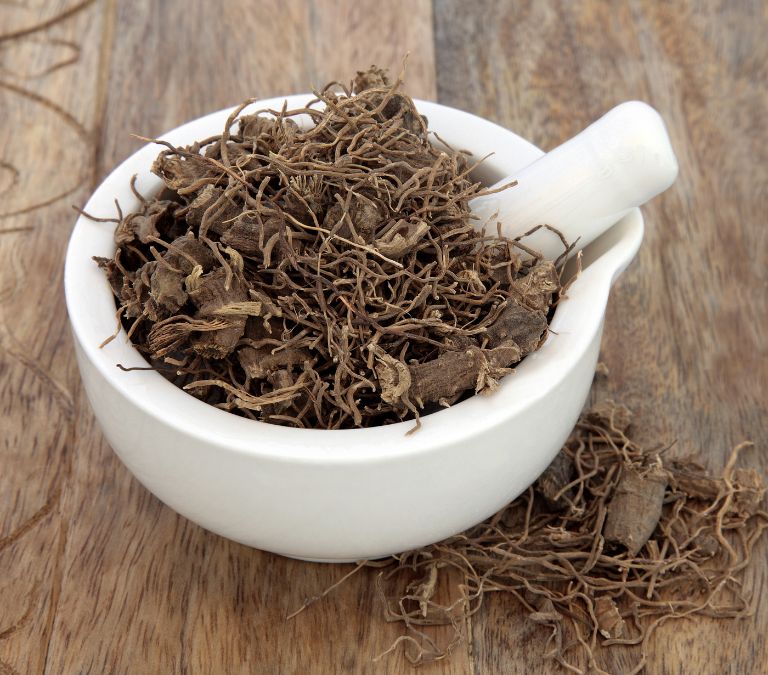
The flowering plant species Actaea racemosa, often known as black cohosh, black bugbane, black snakeroot, or fairy candle (Cimicifuga racemosa), belongs to the family Ranunculaceae. It is indigenous to eastern North America, ranging from southernmost Ontario to central Georgia and westward to Missouri and Arkansas.
Native Americans utilized black cohosh to cure gynecological issues and other conditions. The roots and rhizomes of the plant, collectively known as the radix and rhizome, respectively, are employed as sources of therapeutic extracts.
Black cohosh is a nutritional supplement sold mostly to women in the United States, India, and other nations for treating menopausal symptoms and other gynecological issues.
Among the many active ingredients found in black cohosh are glycosides (sugar compounds), isoferulic acids (substances having anti-inflammatory properties), and perhaps phytoestrogens (plant-based estrogens).
In addition to cimifugic and other phenol carboxylic acids, the rhizomes and roots also contain different saponins (triterpene saponins/triterpene glycosides-like acting). The complete extract includes the active component.
Black cohosh products are available as herbal medicines in most European nations, including China, Malaysia, Thailand, Argentina, and others. Regulatory authorities have approved these products, guaranteeing reliable pharmaceutical quality, safety, and efficacy for relieving menopausal complaints like hot flashes and excessive sweating.
Effect of Black Cohosh on Hot Flashes
One of the reasons the black cohosh herb is very effective with conditions like night sweats and cramping is that it includes a variety of phytochemicals and nutrients. The phytochemicals include tannin, alkylic acid, phytosterols, and beta-carotene. These help calm the nerve and reduce hot flashes and sweat.
These phytochemicals also can affect the body’s ability to control temperature and, as a result, help lessen hot flashes.
Effect of Black Cohosh on Vaginal Dryness
One of the most well-liked herbs for vaginal dryness is black cohosh. It has been discovered to contain a substance called fumarolic acid, which possesses characteristics comparable to estrogen. Many people refer to this crucial element as a natural alternative to hormone therapy.
According to research, fukinolic acid may reduce menopause symptoms brought on by aging-related estrogen level reductions. These consist of a hot flash, mood changes, sweats at night, and virility and dryness. Black cohosh can also be utilized to treat premenstrual symptoms and irregular menstruation.
Effect of Black Cohosh on Hair Growth
During menopause, described as 12 months with no menstruation, the level of the female hormone estrogen drops, which can lead to hormonal imbalance, thereby allowing dihydrotestosterone (DHT) from testosterone to flow into the hair follicles, causing the follicles to stop producing hair.
Black cohosh has been a long-time treatment for menopausal symptoms brought on by hormonal imbalances, notably in situations where estrogen levels are low due to the herb’s putative estrogen-supporting characteristics.
Because it has been suggested that it boosts the production of estrogen, it may have beneficial effects on inhibiting the DHT from making its way to your hair follicles, thereby preventing you from experiencing hair loss.
Effect of Black Cohosh on Bone Health
Since there is evidence of the presence of phytoestrogens in the black cohosh, there is no doubt this herb can lessen osteoporosis-related bone loss associated with menopause, aiding bone mineral density.
Blackcurrant
The blackcurrant, or Ribes nigrum, sometimes referred to as black currant or cassis, is a deciduous shrub in the Grossulariaceae family cultivated for its tasty berries. It is indigenous to temperate regions of central and northern Europe and northern Asia and likes moist, fertile soils there. Both commercially and domestically, it is widely grown.
The fruit is particularly high in polyphenols and vitamin C when it is uncooked. Although blackcurrants can be consumed raw, they are most frequently prepared in sweet or savory dishes. They are commercially grown majorly for the juice market and are used to manufacture jams, preserves, and syrups. Additionally, alcoholic beverages and pigments are made from fruit.
The berry known as the black currant (Ribes nigrum) is cultivated worldwide. The antioxidant and nutritional content of black currant berries, also known simply as “blackcurrants,” is astounding.
People produce medicine from fruit, leaves, flowers, and seed oil. Whatever phase of menopause a woman is in, blackcurrants are a fantastic natural source of relief as they are a rich source of phytoestrogens, or plant-based estrogens, which can help restore the body’s supply and ease some physical and mental symptoms.
Blackcurrants, a natural source of gamma-linolenic acid (GLA), an omega-6 fatty acid that can help reduce inflammation, can also assist the body in regulating cholesterol naturally. Blackcurrant seed oil contributes to the preservation of strong, lustrous hair and healthy nails while also assisting in the reduction of dryness.
A lot of women have menopausal-related hair loss to some extent. The main reason is a decline in hormone levels that starts in perimenopause and lasts into the postmenopausal years. Blackcurrant is a source of Vitamin C, which is a nutrient that is helpful in the treatment of hair loss and hair regrowth.
Effect of Blackcurrant Seed Oil on Hair Loss
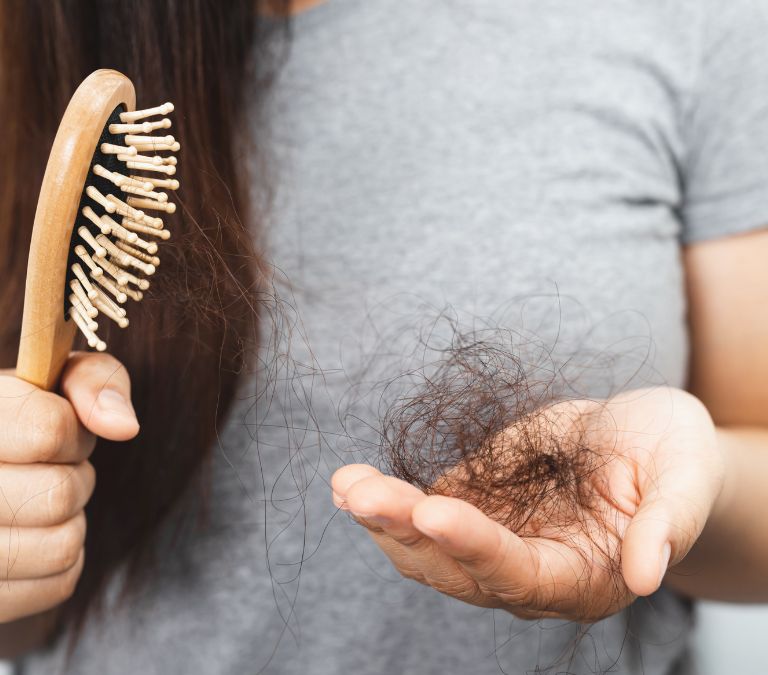
Black currant oil is also shown to be a possible treatment for hair loss as it is effective against various hair issues, such as dryness, brittleness, thinning, or splitting. The hair and scalp are strengthened and moisturized by the oil.
Effect of Blackcurrant on the Skin
Your hormone levels drop throughout menopause, which can cause your skin to become dry, saggy, and thin. The phytochemicals and vitamin C in blackcurrants are key factors in enhancing skin health.
The main vitamin C derivative, magnesium ascorbic phosphate, has a moisturizing effect on the skin. It lessens transepidermal water loss, enhancing your skin’s moisture retention.
Human skin fibroblasts exposed to blackcurrant have higher extracellular matrix (vital skin scaffolding) substances like collagen and elastin (a cell that produces collagen).
Effect of Blackcurrant on Inflammation
It stands to reason that decreased estrogen levels would result in increased inflammation; estrogen is known to have anti-inflammatory effects. This change could happen throughout any stage of menopause. Black currants contain a high concentration of gamma-linoleic acid, a type of omega-6 fatty acid. It has been shown that this chemical can reduce inflammation.
Effect of Blackcurrant on Weight Loss
You may be more likely to acquire weight around your midsection than your hips and thighs due to the hormonal imbalance caused by menopause. Black currants increase fat oxidation during exercise, increasing the amount of fat your body burns as you exercise.
Effect of Blackcurrant on Bone Loss
Due to a lack of estrogen, a hormone in women that protects the bones, menopausal women, in particular, are more likely to have bone loss. Blackcurrant anthocyanins have anti-inflammatory and antioxidant effects that may increase bone mass.
Red Clover
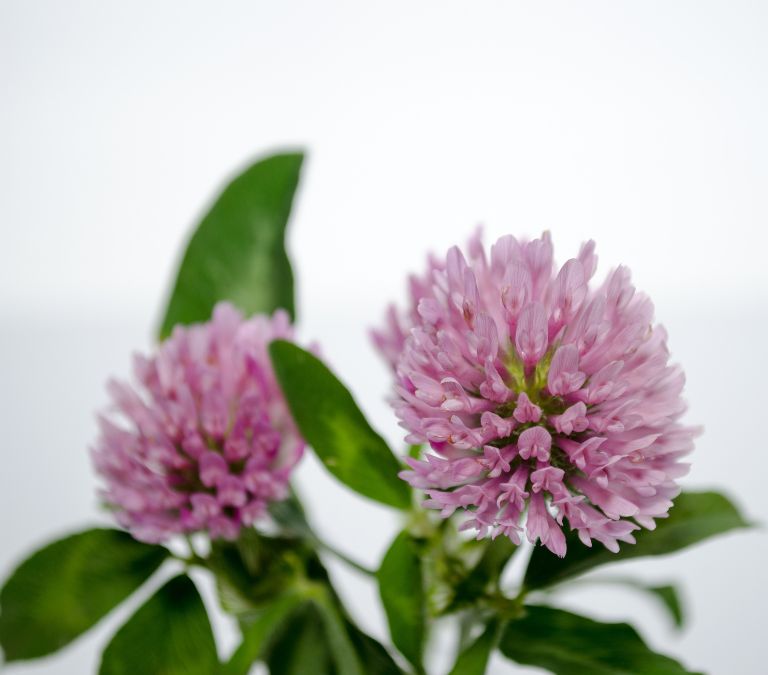
The red clover, or Trifolium pratense, is a herbaceous flowering plant belonging to the Fabaceae family of beans. It originates from Western Asia, Europe, and northwest Africa but has been introduced and naturalized in many other places.
Indian traditional medicine uses red clover as an antispasmodic, anti-inflammatory, and anti-dermatosis drug. Red clover is advocated as a cure for various human illnesses in alternative medicine, including menopause symptoms.
According to several systemic reviews and meta-analyses, red clover extract lessens the frequency of menopause hot flashes. Most people also said that additional study is necessary to verify the findings.
Coumestrol, a phytoestrogen, is present in red clover. However, red clover is not recommended for women with a history of cancer that affects any part of the reproductive system or other estrogen-sensitive conditions because of its activity on estrogen receptors.
But some authors have suggested that the high isoflavone content of red clover mitigates this and may even be beneficial in these conditions.
Effect of Red Clover on Bone Health
Bones become fragile and have a low bone mineral density (BMD) if you have osteoporosis. Increased bone turnover and a loss in BMD can occur as a woman enters menopause due to a drop in estrogen levels.
However, isoflavones, a phytoestrogen found in red clover, can only slightly resemble estrogen in the body. According to several studies, eating isoflavones lowers the risk of developing osteoporosis.
In contrast, 147 postmenopausal women in a 2015 study revealed that ingesting 50 mg of red clover daily for a year did not affect BMD compared to the placebo group. Similar to earlier studies, red clover is not effective in treating BMD. More research is required as a result of the numerous studies that are in dispute.
Effect of Red Clover and Menopausal Symptoms
The high isoflavone concentration of red clover is thought to help lessen night sweats and hot flashes, symptoms of menopause.
According to two reviews, taking 40–80 mg of red clover (Promensil) per day may reduce hot flashes in women who experience them frequently (five or more per day) by 30–50%.
Another study found that taking a supplement comprising many herbs, including red clover, resulted in a 73% reduction in hot flashes within three months. However, because there were so many other elements in the herb, the specific role played by red clover is somewhat obscure.
Additionally, red clover has demonstrated modest improvements in other menopausal symptoms such vaginal dryness, anxiety, and sadness.
However, multiple studies have shown that ingesting red clover does not reduce menopausal symptoms compared to a placebo. There is currently no conclusive proof that using red clover supplements will lessen menopause symptoms.
An improved, more specific third-party research is recommended to elucidate the function of red clover on Menopausal symptoms
Effect of Red Clover on Hair and Skin Health
Traditional medicine has employed red clover extract to support healthy skin and hair.
After consuming 80 mg of red clover extract for 90 days, participants in randomized research with 109 postmenopausal women reported significant changes in skin and hair appearance, texture, and general quality.
Effect of Red Clover on Vaginal Dryness
Women experiencing menopausal symptoms frequently experience vaginal dryness due to decreasing estrogen levels in the vaginal tissues.
Red clover’s estrogenic activity has the advantage of repairing the vaginal lining. It also helps to normalize vaginal shrinkage and thinning in menopausal women.
Red clover is one of the most abundant sources of isoflavones known to have positive effects on female hormones.
Isoflavones are phytoestrogens, molecules found in plants that resemble our estrogen in structure. They can subtly mimic natural estrogen in the body to restore equilibrium when hormone levels fluctuate.
By consuming more phytoestrogen-rich foods, such as red clover, in your diet, the estrogen level in the body can gradually increase, thereby helping to normalize estrogen levels and lessen vaginal irritation symptoms.
Effects of Red Clover on Insomnia and Anxiety
A common side effect of menopause is anxiety and sleeplessness.
Red clover flowers might be useful in the fight against stress. Red clover leaves have a nervine and sedative effect which helps to calm the body, lessen stress, and help the body relax to sleep.
It’s Sedative effects aid in easing physical tension, particularly in the muscles. Taking it even as tea gives feelings of tranquility, refreshment, and relaxation.
Calcium and magnesium, two minerals crucial for the nervous system’s health, can be found in red clover. When nerve activity is reduced, the body can release tension, nervousness, stress, anxiety, and concern better. These all help to lower tension and encourage sound sleep.
Red clovers also aid in the body’s detoxification by making people urinate more frequently. Removing chemicals and pollutants accumulated in the body reduces the internal tension that menopausal symptoms have caused.
Red Clover and Cardiac Health
According to some early research, red clover may help postmenopausal women’s heart health.
One 2015 research of 147 postmenopausal women found that taking 50 mg of red clover (Rimostil) daily for a year reduced LDL (bad) cholesterol by 12%.
In one research analysis, postmenopausal women who took red clover for four to twelve months saw a significant rise in HDL (good) cholesterol and a decline in total and LDL (bad) cholesterol.
Conversely, a study conducted in 2020 showed that red clover did not raise HDL (the good cholesterol) or lower LDL (the bad cholesterol).
Authors have attributed the inconsistencies surrounding research on red clover and various menopausal symptoms to the limited sample sizes and improper blinding that plagued their works despite some encouraging outcomes. As a result, better standard research is required.
Additionally, these trials involved older menopausal women. Therefore, whether these impacts will apply to the wider public is unclear.
Dong Quai
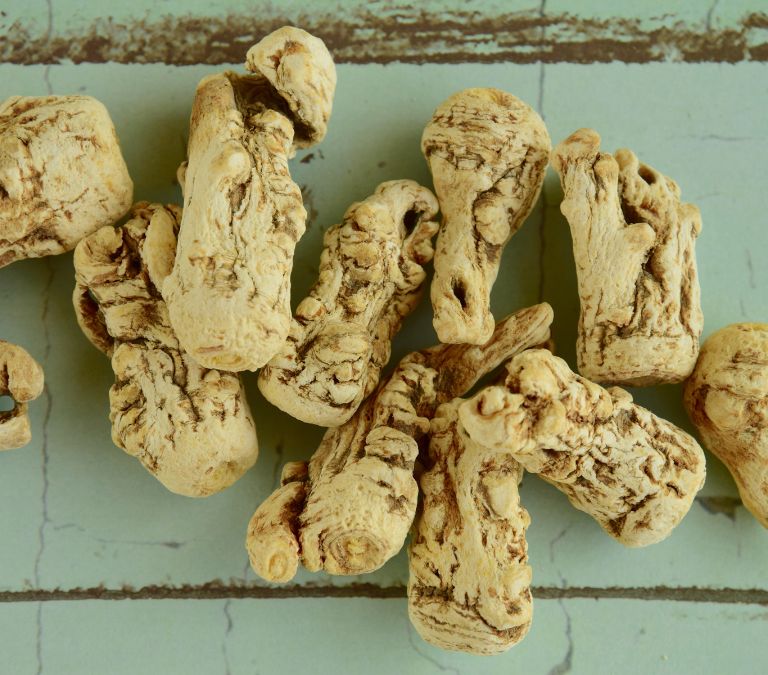
Dong Quai (Angelica Sinensis) is a plant used to treat several ailments. It is sometimes called “female ginseng.”
It is a fragrant plant with a spherical cluster of small white flowers. The flower is a member of the same botanical family as celery and carrots. For medical purposes, people in China, Korea, and Japan dry the root of the plant.
Dong Quai has been used for herbal medicine for a long time. It works effectively for different body ailments like menopause. Below are some ways it helps menopausal women
Effects of Dong Quai on Bone Health
Osteoporosis particularly affects menopausal and postmenopausal women due to the abrupt reduction in estrogen levels that comes with menopause. Dong Quai promotes the formation of new bones while also strengthening existing ones.
Dong Quai accomplishes bone health by increasing protein secretion and collagen synthesis in bone tissue; the herb can promote bone remodeling, thus aiding bone density.
Effects of Dong Quai on Heart Health
Dong Quai helps to lower bad and harmful triglycerides and cholesterol by lowering cholesterol levels significantly. In this way, it lowers the chance of developing heart disease and promotes improved heart health.
Additionally, dong Quai contains chemical substances that relax the blood pressure in arteries and lengthen the cardiac rest interval between heartbeats, increasing blood flow. Dong Quai can help prevent heart attack and hypertension since it lessens the deposit of plaque in the walls of blood vessels.
Effects of Dong Quai on Vaginal Dryness
A substance in Dong Quai known as coumarins opens blood vessels, facilitating easier blood flow. Herbalists think Dong Quai can improve blood quality in addition to having anti-inflammatory effects because of this phenomenon. Consequently, vaginal tissue is nourished, and vaginal secretions are increased.
Embedded in the root of dong quai is a substance robust in analgesic properties that help reduce uterine pain in menopausal women.
Effect of Dong Quai on Body Energy Level
During menopause, women experience low energy levels, and excessive exhaustion, often known as fatigue as expected.
As a natural herbal remedy, dong Quai functions as an adaptogen and aids the body in replenishing its energy stores. It directly interacts with the cellular mitochondria, exerting its rejuvenating effects on them, which aid the restoration of the body’s energy reserves.
Effects of Dong Quai on Hair Growth
Dong Quai is a good source of calcium, which is important to keep hair from becoming brittle from the effect of hair loss due to menopause. It has the power to increase metabolism and give the body the vital nutrients required for the development of new hair.
When applied locally, dong quai can penetrate deeply into the hair follicles, providing them with adequate nourishment and lowering excessive sebum secretion.
Dong Quai accomplishes hair rejuvenation by enhancing blood flow to the scalp. Therefore, dong quai can be counted on to assist in slowing hair loss. It can give the hair follicles the necessary nourishment and promote healthy hair growth.
Evening Primrose Oil
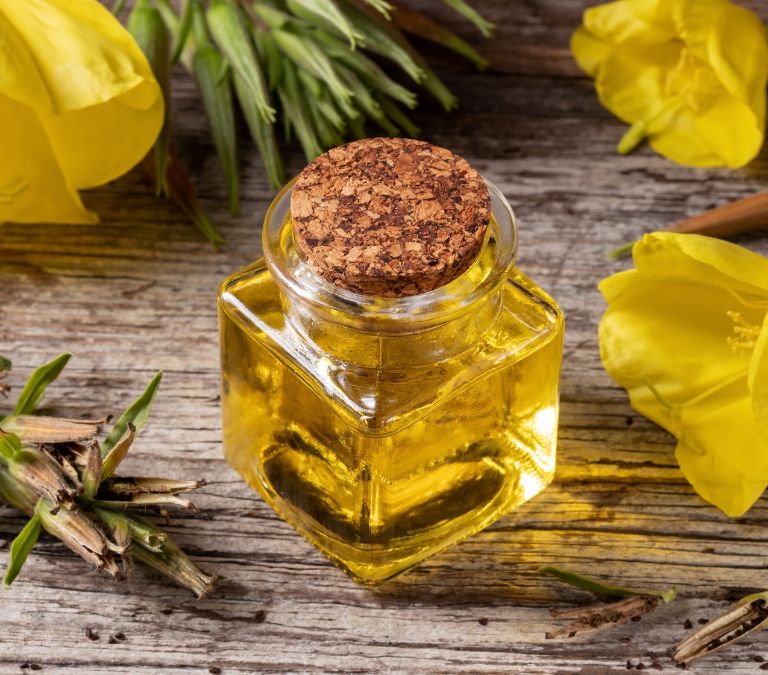
America is the original home of the evening primrose (Oenothera biennis). It is recognizable at dusk as it blooms with yellow flowers. Oenothera biennis is a plant found in eastern and central North America, which produces the seeds from which evening primrose oil is extracted.
Primrose oil has several health advantages. For instance, many women take evening primrose oil to ease menopause symptoms. Although the oil does not reverse menopause, it does help people manage its usual adverse effects.
The major active component of the evening primrose is the gamma-linolenic acid (GLA) which contains linolenic acid and vitamin E. Omega-6 fatty acid and gamma-linoleic acid aid the body in producing prostaglandin hormones. Aside from vitamin E, the oil also contains other vitamins that are beneficial for health.
Effect of Evening Primrose Oil on Hair Growth
The evening primrose oil can help counteract the effect of hair loss due to menopause symptoms because of its high omega-6 fatty acid concentration and gamma-linolenic acid (GLA). The fatty acids can lessen swelling and enhance hair health.
GLA works as a hair mask and can help thin hair and stimulate scalp growth. Because applying the oil directly to the scalp strengthens hair, essential fatty acids have been discovered to be particularly beneficial at reducing hair breaking.
Effect of Primrose Oil on the Skin
As menopause sets in, the skin may appear dry, limp, thin, and wrinkled with patches, especially as the hormone level reduces.
Evening primrose oil’s capacity to lessen the signs of dryness may be one of its most well-known cosmetic advantages. Evening primrose oil provides emollient characteristics that aid in softening and smoothing the skin in skincare products, which enhances the skin’s overall texture.
Evening primrose oil is viscous, extremely moisturizing, and helps improve skin moisture by lowering transepidermal water loss. The high quantity of linoleic acid helps with acne scars and patches and can even change skin tone. Primrose oil can moisturize the skin and stop acne when directly applied to it.
Effect of Primrose Oil on Inflammation
As estrogen levels decrease during menopause, inflammation may worsen. It makes sense that as estrogen levels fall, inflammation rises because estrogen has an anti-inflammatory effect. Any stage of menopause can cause this alteration.
Gamma-linolenic acid plays an essential part in the body’s oestrogenic processes and reduces inflammation. Gamma-linolenic acid reduces joint inflammation and maintains joint structure and function, which may assist in explaining why it is thought to alleviate menopausal joint discomfort.
Furthermore, evening primrose oil may help control menopausal symptoms like hot flashes and breast pain by balancing low estrogen levels.
Maca
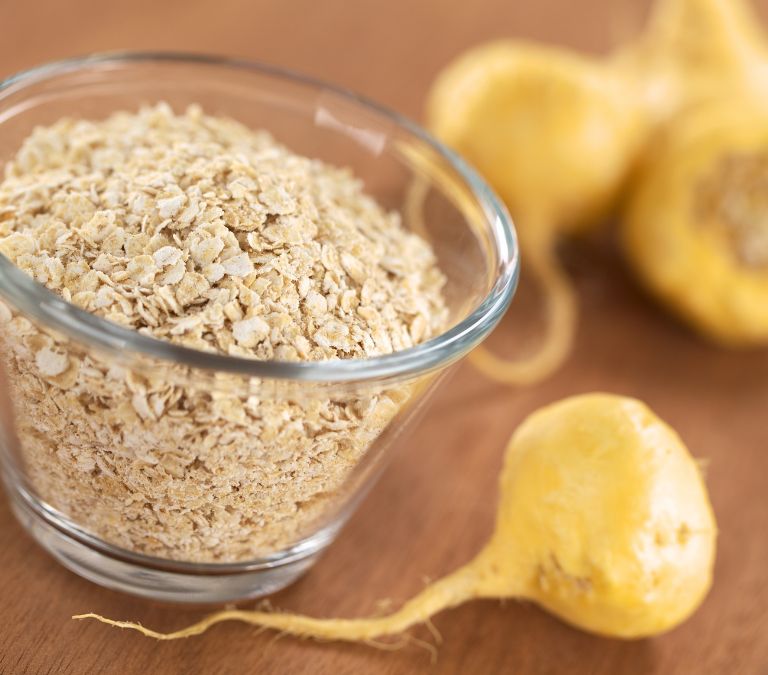
The plant maca is found in the upper plateaus of the Andes Mountains in Central Peru. It has been grown in that part of the world for at least three thousand years as a vegetable crop. An ancestor of the radish, maca has a butterscotch-like aroma. Medicine is made from its root.
It is a very useful plant for menopausal women because it helps alleviate menopause symptoms in many ways.
Effects of Maca as a Skin Moisturizer
When applied directly to the skin, maca helps with skin protection from ultraviolet (UV) radiation. It is an excellent ingredient for dry, old, or tired-looking skin since it helps minimize the appearance of fine wrinkles and encourages cell renewal.
Effect of Maca on Cardiovascular Diseases
Low estrogen, which can boost cholesterol levels, may increase your risk of developing heart and circulation illnesses. During menopause, hormone levels may change, which could lead to palpitations.
The natural antioxidants in the body, such as glutathione and superoxide dismutase, are supported by maca root. These antioxidants combat free radicals. Free radicals can harm the body’s cells by damaging them.
Additionally, these antioxidants help to lower the risk of developing heart disease if used during menopause.
Effects of Maca on Weight Loss
Many women gain weight during menopause because of hormonal changes. Maca enhances glucose metabolism, resulting in weight loss and a reduction in fat storage in the body.
Since maca is fuel for physical activity, people can exercise for longer periods without feeling unduly weary by consuming Maca extracts.
Effect of Maca on Bone Health
Osteoporosis risk and bone loss are greatly accelerated during and after menopause. However, by acting as a calcium-rich dietary source and regulating the body’s estrogen levels, maca aids in the treatment of osteoporosis.
The calcium content of maca helps support the development and strength of bones.
Additionally, maca has an N-benzyl-palmitate component that helps regulate several related genes and promotes osteoblast development, proliferation, and mineralization.
Additionally, it enhances the functionality of bones. Increased osteoblast proliferation helps to support the formation of new bone.
Effect of Maca on Energy Level
When estrogen levels fall, a hormonal imbalance contributes to menopause-related crash fatigue. But macamaca has a built-in capacity to boost energy levels and offers constant energy.
Maca, you can feel less tired and more motivated, enabling you to participate in healthy stress-reduction activities like exercising and eating well.
Effect of Maca on Sleep
The menopause reduction in estrogen causes menopausal symptoms, such as hot flashes, sweats, and anxiety, making it difficult to fall asleep and causing non-restorative sleep and early morning awakenings.
Maca might give you a sense of stability and serenity. Many people discover its relaxing effects unwinding enough to take before bed, and over time it can also assist in making sleep schedule more regular and refreshing.
Flax Seeds
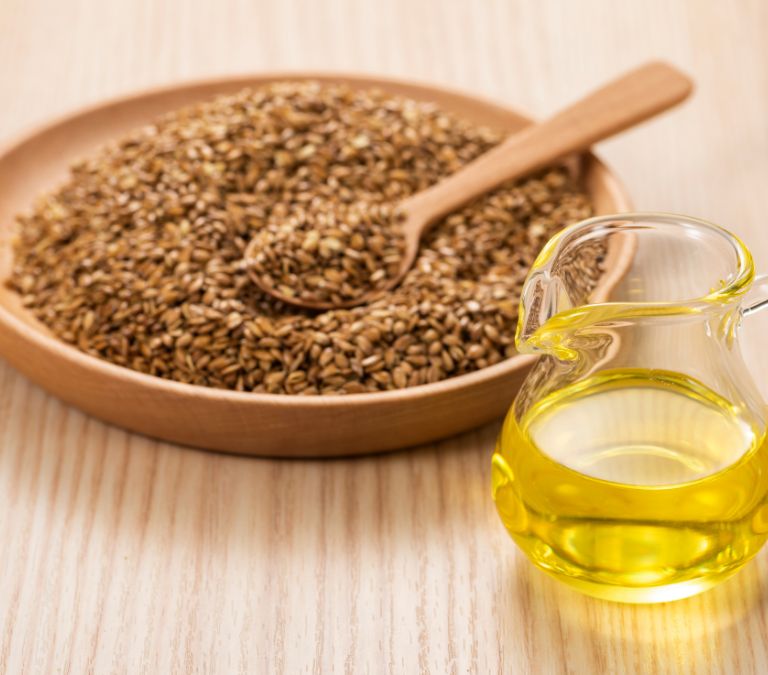
Flax seeds have existed for a long time. Ancient Egypt and China both cultivated flax on a large scale. It has been used in Ayurvedic treatment in Asia for thousands of years.
It is a plant-based food that contains protein, fiber, omega-3 fatty acids, antioxidants, and healthy fat, in sufficient amounts.
It is known as a “functional food” by certain cultures, which suggests that one can eat it to improve their health. It can help maintain a healthy weight, cut cholesterol, and lower blood pressure, reducing the risk of several malignancies.
Top it all, and it is good medicine for menopausal women since it helps manage its symptoms. It can help in the following ways.
Effect of Flax Seeds on Vagina dryness
It is advised that each meal contains some quantity of fat for the body to produce enough sex hormones and reduce vaginal dryness. Flax seed oil, which has estrogen-like properties, may offer some assistance for vaginal dryness.
Flax seeds contain phytoestrogens in abundance. These organic substances relieve vaginal dryness by acting like the hormone estrogen in the body.
Effect of Flax Seed on Weight loss
A diet that includes flax seeds could be beneficial to counter the weight gain caused by menopause as they contain soluble fiber that helps reduce cravings and appetite, which may help with weight loss.
Flaxseed’s high fiber content may encourage regular bowel motions and enhance digestive health.
Effect of Flax Seeds on Heart Health
Flax seeds contain alpha-linolenic acid, an advantage for heart disease patients. Flaxseed may also help lower excessive blood pressure, contributing to heart disease.
Products made from flax seed reduce cardiovascular risk factors largely by slightly enhancing lipid profiles. Due to its high alpha-linolenic acid (ALA) and lignan content, flaxseed may also influence cardiovascular risk factors through other methods by reducing oxidative stress, platelet adhesion, blood sugar, and blood pressure.
Because it has a lot of fiber, flaxseed aids in clearing arteries. Additionally, it has an omega-3 acid that lowers inflammation.
Flax Seeds and Hot Flashes Solution
The lignans in flax seeds can positively affect eradicating symptoms like hot flashes and night sweats.
Effect of Flax Seeds on Bone health
The alpha-linolenic acid, abundant in flax seed, is crucial for maintaining or building bone mass.
Flax seeds are a powerhouse of nutrients, including calcium, Omega-3 fatty acids, fiber, and protein. Alpha-linolenic Acid (ALA), known to boost bone metabolism and enhance bone health, is also present.
An increased bone density results from the ALA content preventing bone loss. It also improves bone mineral density.
Effect of Flax Seeds on Energy
Both flax seeds and oil made from flax seeds are fantastic energy sources. These seeds might provide you with the boost of energy you need because they are rich in beneficial omega-3 fatty acids.
Effect of Flax Seeds on Hair Health
Vitamin E, abundant in flax seeds, is beneficial for skin and hair health, especially as menopausal symptoms include hair loss. The vitamin improves scalp health by minimizing free radical damage. It aids in boosting blood circulation, encouraging hair growth and development while reducing hair breakage.
To reap the greatest advantages from the oil, menopausal women can apply it directly on the scalp. It aids in promoting hair development and strengthening the hair.
Effect of Flax Seeds on Anxiety
Omega 3 fatty acids, abundant in flax seed, are believed to help maintain the brain’s health and ideal serotonin levels. Nerve communication and the recognition of emotional responses are both facilitated by serotonin. At the same time, mood swing characterizes menopausal women.
Another method flax seed can help you cope with stress is improving your mood, making it much harder to become depressed later. You will notice that you won’t lose your temper as readily and will be more composed overall in all circumstances and challenges if you use flax seed oil as a regular supplement.
Effect of Flax Seeds on Insomnia
For Menopausal women suffering from insomnia, flax seed may be very helpful. Tryptophan, an essential amino acid that cannot be naturally produced and must be received through diet, is found rich in flax seeds.
As a result, adding this amino acid to one’s regular diet can help speed up falling asleep because tryptophan aids in the body’s production of melatonin, a key hormone involved in sleep.
Flax seeds also contain magnesium, which aids in muscular relaxation, and omega-3 fatty acids believed to alleviate stress-related symptoms that could otherwise prevent you from having the ideal amount of sleep.
A meal rich in tryptophan has additional benefits for reducing stress. It is a serotonin stabilizer. Tryptophan and the omega-3 fatty acids in flax seed oil make it a wonderful supplement for people with anxiety and sadness.
Other useful benefits for menopause:
Minerals, including magnesium, iron, zinc, phosphorous, calcium, and potassium, are all naturally present in flaxseed. These minerals provide numerous critical advantages for women going through menopause, including supporting the immune system, preserving healthy bones and teeth, and lowering tiredness and exhaustion.
Ginseng
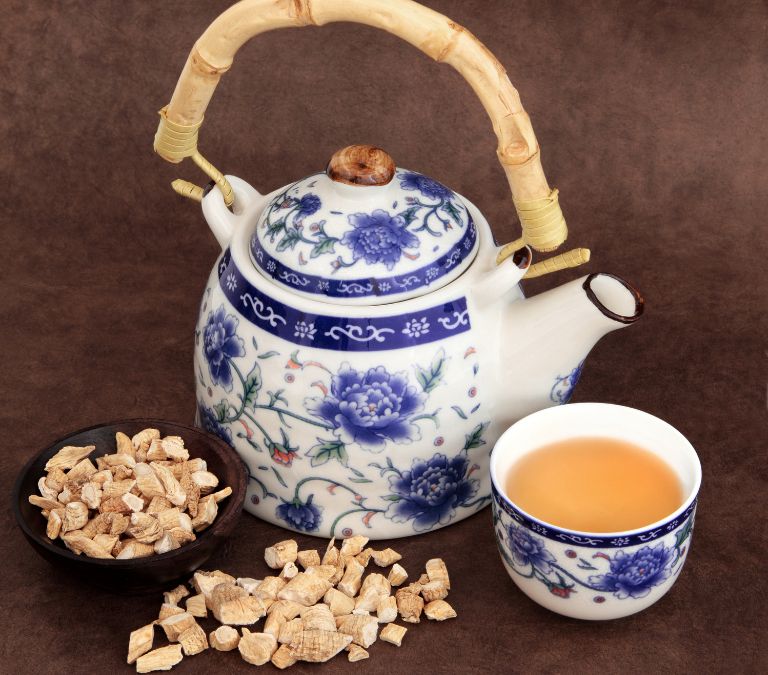
Ginseng is the root of Panax species like South China ginseng (P. notoginseng), and American ginseng (P. quinquefolius), Korean ginseng (P. ginseng). The presence of ginsenosides and gintonin frequently distinguishes ginseng.
There are at least 18 aminoglycoside saponins, sometimes known as “ginsenosides,” that constitute the active components of ginseng. The most popular uses for ginseng in food and medicine are in China and Korea.
Ginseng may be used as a nutritional supplement or in small doses in herbal teas and drinks that give energy. The root is typically sold dry, either whole or sliced. Although less appreciated, ginseng leaf is occasionally also used.
The leaves and stems are easier to harvest and contain more phytochemicals than the roots, even though the roots are employed in traditional Chinese medicine. The ingredients include ginsenosides, which are steroid saponins.
Ginseng is a common ingredient in many banchan (side dishes) and guk (soups), as well as in tea and alcoholic beverages in Korean cuisine. Insam cha (ginseng tea), inseam-Ju (ginseng liquor), and other ginseng-infused beverages are eaten.
Despite ginseng’s long history of usage in traditional medicine, current research on its biological effects is still ambiguous. A clinical study in its first stages suggests possible impacts on menopausal symptoms.
For example, a literature search was conducted using all databases from their origin to September 26, 2012, including all randomized clinical trials (RCTs) that compared ginseng to placebo controls in postmenopausal women. The review’s objective was to evaluate ginseng’s efficacy as a menopause symptom management alternative.
A Cochrane risk assessment was used to evaluate the methodological quality of each study. Four RCTs met the inclusion criteria. The majority of RCTs had a high bias risk. In one RCT, Korean red ginseng (KRG), in comparison to a placebo, dramatically increased sexual arousal and overall wellness.
According to a different RCT, KRG was more effective than a placebo at treating menopausal symptoms as measured by Kupperman’s index and the menopausal rating score.
The third RCT could not demonstrate a meaningful difference between KRG and placebo in hot flash frequency. In contrast to the placebo, ginseng positively affected depression and overall well-being in the fourth RCT.
Based on the above finding, the literature reviewers concluded that there was insufficient research to support ginseng as a management tool for menopause symptoms, as most RCTs suffered from a high risk of bias.
Ultimately, they could not reach a strong conclusion to recommend ginseng for menopausal women. Therefore, they suggested that further thorough research was needed.
Out of the 44 types of research analyzed between 2005 and 2015, 29 provided some favorable evidence, whereas 15 found no impacts. But, as of 2021, the effects of these ginseng chemicals have not been well investigated through clinical research and, as a result, are still unknown.
It’s interesting to note that later in 2021, an 8-week clinical experiment on postmenopausal women discovered that daily supplementation with Korean red ginseng (KRG) dramatically enhanced mitochondrial function, antioxidant status, and decreased fatigue.
The study’s findings demonstrated that after 63 participants consumed 2 g/day of KRG for 8 weeks, there was an increase in the quantity of mitochondrial deoxyribonucleic acid (mtDNA) copies and the level of total antioxidants, as well as a greater improvement in fatigue symptoms than in the group that received a placebo.
The mechanism of action showed that PGC-1alpha, a key player in the control of mitochondrial biogenesis, functions as a peroxisome proliferator-activated receptor-gamma co-activator.
Through the activation of nuclear respiratory factors NRF-1 and NRF-2, ginseng encourages the production of mitochondrial transcription factor A (TFAM), which upregulates the transcription and replication of mitochondrial DNA.
Conclusion
Menopause is a physiological process that every woman goes through. It typically comes with its unique ups and downs.
Since menopause is a natural process, the herbs discussed above may provide the remedy to its numerous symptoms. I hope that you find this article to be the helpful guide you need to get through the difficulties of menopause.

